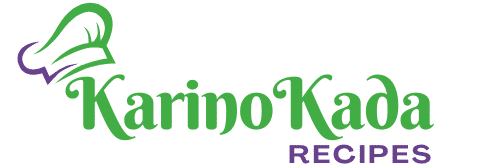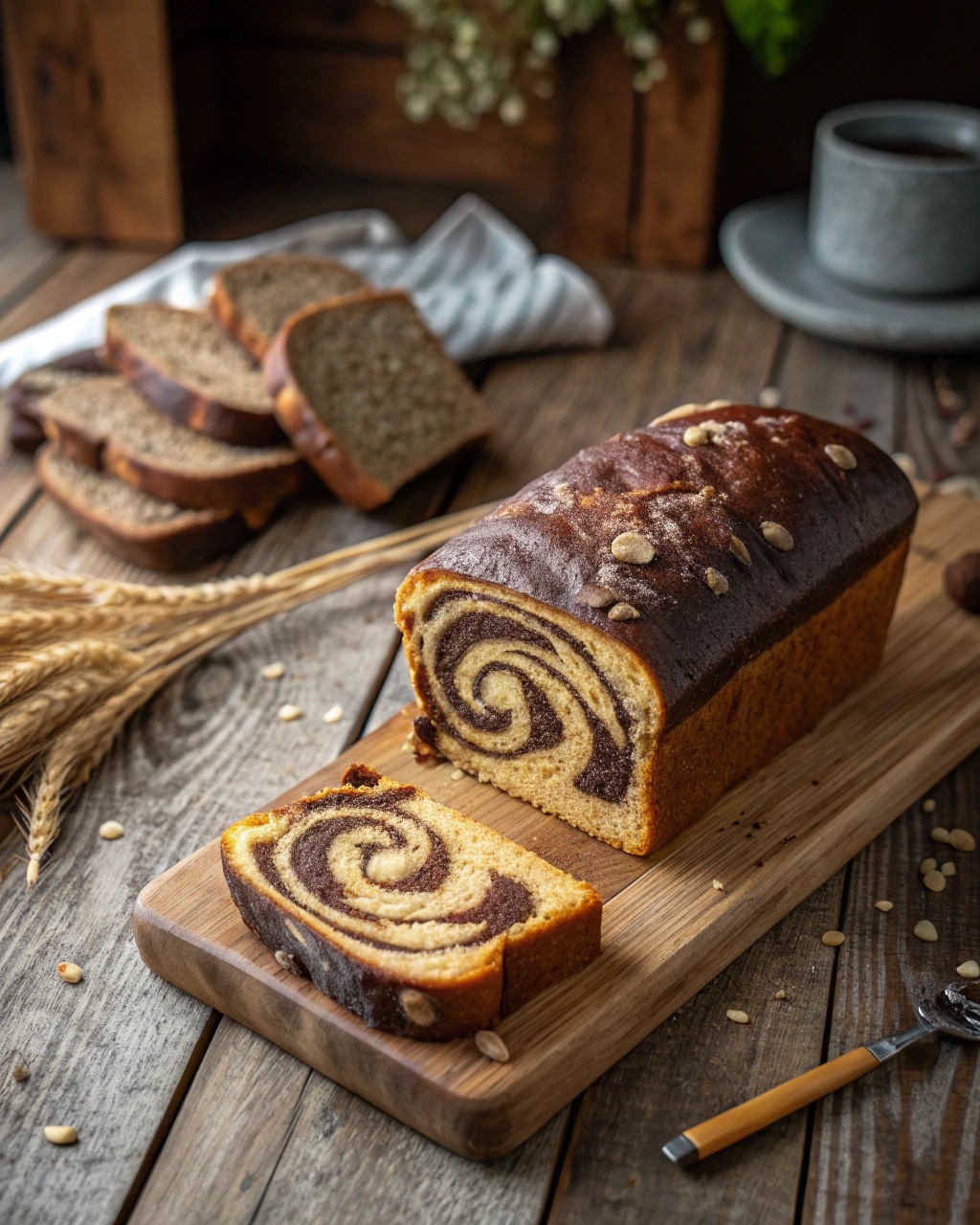Looking for the perfect marble rye bread recipe that gives you bakery-quality results at home? You’re in the right place. In this guide, I’ll walk you through the story behind this beautiful, swirled loaf, then show you how to bake it with simple steps and ingredients. We’ll cover flavor tips, health benefits, and how it compares to traditional rye, plus answer the top questions bakers ask. If you’ve ever wanted to try your hand at this rye masterpiece, this is the place to start.
My Marble Rye Bread Story (And Why It Stuck)
From My Kitchen Window in Asheville
There’s something about a good swirl. I remember the first time I saw marble rye bread at a little German bakery tucked between two antique shops near Hendersonville. The golden crust, those hypnotic chocolate-and-vanilla-like spirals—I couldn’t believe it was bread. Years later, after leaving the classroom and diving into home baking, I knew this loaf had to be on my list. Marble rye bread became a quiet obsession in my kitchen, a weekend ritual and an edible tribute to craft and contrast. It’s bread, yes, but it’s also storytelling—one slice at a time.
The first time I made it, the swirls didn’t swirl, and my dark rye dough was more cement than supple. But the flavor? Sharp, earthy, a little tangy—it hooked me. Now, it’s one of those recipes I come back to each fall, when the windows fog up and a soup simmers nearby. This marble rye bread recipe is the one I finally got right, and it’s the version I trust every single time.
What Makes This Marble Rye Bread Recipe Special
This isn’t just about the two-tone look. The balance of caraway seeds with molasses and cocoa in the darker dough brings depth to the bite. You’ll be working with two rye doughs—light and dark—braided or rolled together. It tastes great with butter, pastrami, or as a contrasting slice of cranberry walnut bread at breakfast.
It’s also a surprisingly forgiving bread. If you’re new to working with rye flour, this recipe won’t punish you for being a little off with your shaping. And with the right balance of whole grain and all-purpose flour, you’ll avoid the dense, heavy texture that scares folks away from rye. This isn’t a bread that just looks good—it delivers.
We’ll dive into how to shape the swirl, the right yeast proofing technique, and tips for keeping both doughs moist but workable. And if you’re exploring more wholesome baked treats, the banana muffins on the blog pair beautifully with leftover rye crumbs turned into toast crumbs.
Crafting the Perfect Swirl (How to Make Marble Rye Bread at Home)
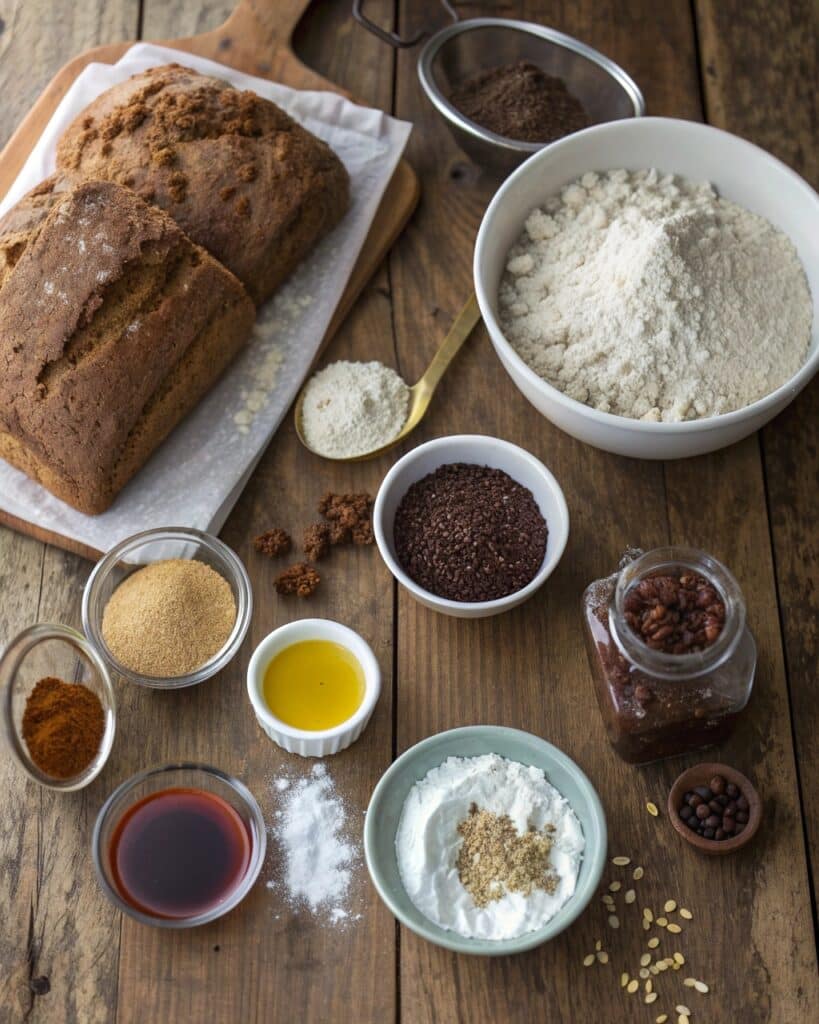
Two Doughs, One Beautiful Loaf
To make a proper marble rye bread recipe, you need to prepare two different doughs: a light rye and a dark rye. The base ingredients are mostly the same—rye flour, all-purpose flour, yeast, salt, water—but the dark rye gets its deep hue from molasses and a touch of unsweetened cocoa powder. This isn’t for sweetness, but to build complexity in flavor and deepen the color contrast that gives the bread its signature swirl.
After mixing both doughs, you’ll let them rise separately until doubled in size. Then comes the fun part—rolling them out and layering. You can either stack them and roll into a spiral, or braid two ropes together. The final shape becomes clear during baking. That’s when your home fills with that sharp, toasted rye aroma that reminds me of chilly Sunday afternoons and strong coffee.
Whether you’re using a stand mixer or working by hand, just remember that rye flour behaves differently from regular white flour. It absorbs more moisture and has less gluten, which means the dough can feel sticky and a little shaggy at first. But don’t overflour—it firms up as it rests.
You can see this method echoed in recipes like Greek yogurt breakfast blondies where dual layers create visual and flavor contrast, but here, we’re doing it in yeasted form.
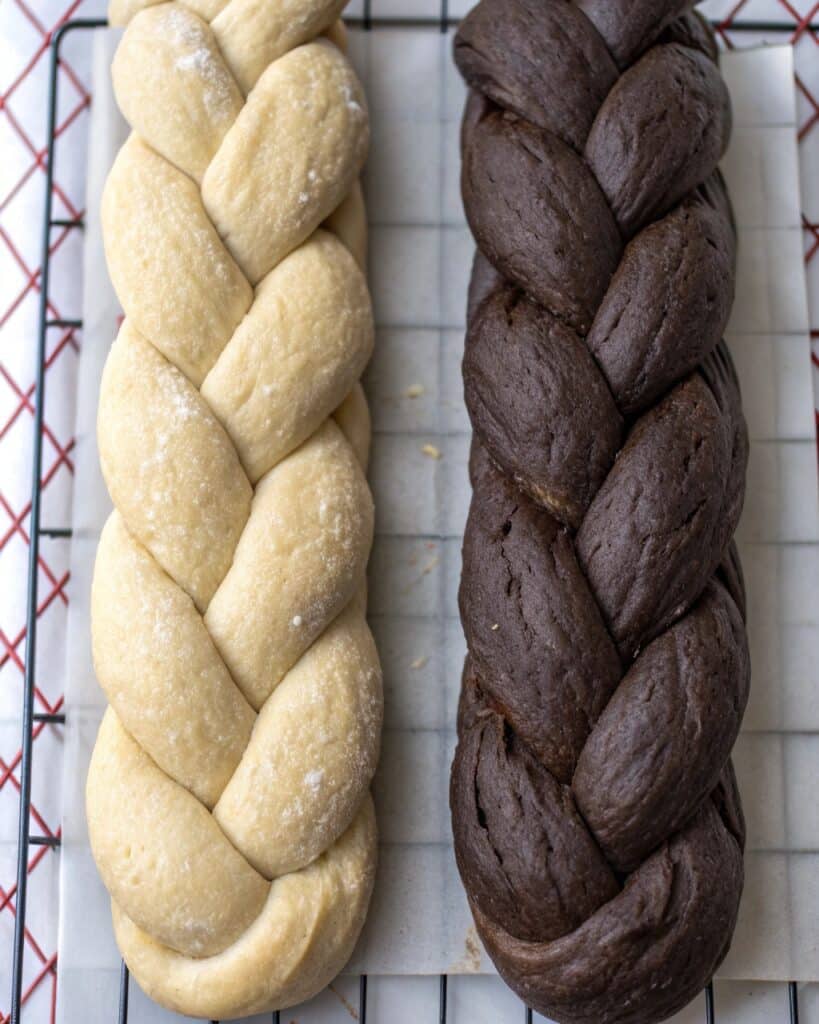
Baking Tips for a Bakery-Level Result
Timing and shaping are what set a great marble rye apart from a so-so one. Use this as a quick reference to help on baking day:
| Step | Best Practice |
|---|---|
| First rise | Let each dough rise in a warm, draft-free spot for 60–90 minutes |
| Shaping | Roll or braid carefully without overhandling to avoid degassing |
| Proofing | Final rise after shaping should be about 45 minutes |
| Baking | Bake at 375°F for 30–35 minutes until hollow-sounding |
To get a crispier crust, add steam by putting a pan of hot water on the oven’s bottom rack. Don’t skip the cooling step either—like with healthy chocolate peanut butter pie, structure needs time to set.
Rye Bread Variations and Ingredient Swaps That Work
Adjusting the Marble Rye Bread Recipe to Fit Your Pantry
Whether you’re a frequent baker or someone diving in for the first time, it’s helpful to know you can adjust this marble rye bread recipe based on what’s on hand. For instance, if you don’t have molasses, you can use dark brown sugar in the dark rye dough—it won’t give quite the same richness, but it gets close. A teaspoon of espresso powder can also deepen that color and flavor if cocoa alone isn’t cutting it.
And while I typically stick with a 50/50 mix of rye flour and all-purpose flour, you can increase the rye up to 60% for a more robust, nutty texture. Just expect a denser loaf. For those who want to keep it lighter, subbing in bread flour for some of the all-purpose flour adds strength without toughness.
Some bakers add a touch of oil or even a splash of buttermilk to soften the crumb. Others, especially in New York-style delis, brush the top with an egg wash before baking for that signature sheen.
Rye’s strength lies in how versatile it is. Whether it’s paired with caraway (classic), coriander, or even fennel, there’s room to personalize your loaf without ruining the integrity of the recipe. If you enjoy flavor-forward recipes like creamy burrata pasta, you’ll appreciate how even subtle tweaks can bring a new dimension to bread.
Making It Dairy-Free, Vegan, or Whole Grain
Marble rye bread is naturally dairy-free as long as you skip brushing with butter or milk. To make it vegan, use water instead of honey for sweetening and skip the egg wash. I often brush mine with olive oil if I want a glossy top that fits a plant-based diet.
To make a whole grain version, replace a quarter of the all-purpose flour with whole wheat flour. This adds depth without making it overly dense. I’ve also had good results adding a tablespoon of vital wheat gluten to help the structure when going heavier on the rye.
Want a zero-added-sugar version? You can reduce the molasses by half and boost flavor with a pinch of ground coriander and cocoa, similar to how the richness in Cottage Cheese Blueberry Cloud Bread is balanced without overloading on sweeteners.
Serving, Storing, and Savoring Every Swirl
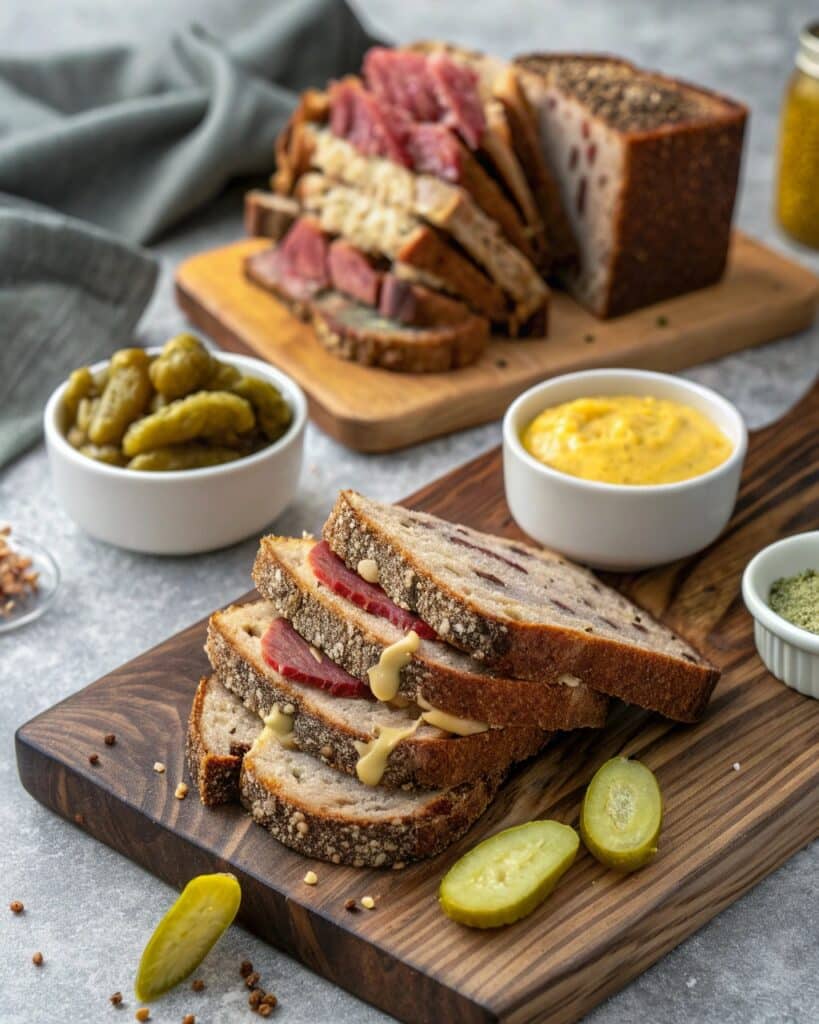
Best Ways to Enjoy Marble Rye Bread
After the marble rye bread cools and is sliced, it’s ready to enjoy. This bread is more than a sandwich base—it’s a flavor-forward centerpiece. It It goes well with strong cheeses like aged cheddar or creamy goat cheese. For a classic deli-style sandwich, layer it with pastrami, spicy mustard, and pickles. At brunch, toast it and slather with butter and a little apricot jam—it holds up beautifully under heat.
For a cozy dinner, I love serving it alongside hot soup—especially lentil, mushroom, or creamy tomato. The strong rye flavor pairs well with warm, brothy meals, similar to how the herbs in a peach burrata salad balance richer dishes. If you have extra slices, cube and toast them for rustic croutons or process into breadcrumbs to top casseroles.
And if you’ve made a double batch, marble rye is also amazing for grilled cheese—its swirled layers crisp up in the pan for a satisfying golden finish. Try it with gouda or havarti and a smear of mustard for a next-level lunch.
How to Store and Freeze Marble Rye Bread
Marble rye bread stores well if wrapped tightly in foil or stored in a bread box. It stays fresh at room temperature for 3 to 4 days. For longer storage, wrap it in plastic wrap, then foil, and freeze for up to 2 months. To serve, let it thaw at room temperature or reheat in the oven at 300°F for 10–15 minutes.
Avoid refrigerating this bread—it can dry it out quickly. If you’re not going to eat the entire loaf soon, divide it into slices and freeze them. That way, you can take out only what you need and toast it without thawing. This method also works well if you’re planning ahead for a big brunch spread with options like banana muffins or sweet pastries.
The secret to making this bread last is airtight wrapping and not slicing it until needed. Like many homemade breads, it’s best the day it’s baked—but still very good after a gentle refresh.
FAQ: People Also Ask
What is the difference between rye bread and marble rye bread?
Rye bread is typically made from a single type of rye dough, often with caraway seeds and a dense crumb. Marble rye bread combines two rye doughs—light and dark—layered or twisted together for a swirled appearance and more complex flavor.
Is marble rye a healthy bread?
Marble rye can be part of a healthy diet, especially if it includes whole rye flour.Rye bread has less sugar than white bread and contains fiber and nutrients. Choose recipes with minimal added sweeteners and whole grain flours for the most benefit.
What is the dark part of marble rye bread?
The dark swirl comes from a portion of dough colored with molasses and unsweetened cocoa powder. It adds both visual appeal and a deep, slightly sweet flavor that contrasts beautifully with the light rye dough.
Is stone baked rye bread healthy?
Yes, stone baked rye bread often has a rustic crust and rich flavor. It’s typically denser and can be higher in fiber, especially when made with whole rye flour. Look for versions without preservatives for the best nutritional value.
Conclusion
This marble rye bread recipe brings together taste, tradition, and a touch of kitchen artistry. Whether you’re serving it at Sunday lunch, packing it into a sandwich, or toasting it for a snack, the swirl tells a story in every slice. With flexible ingredients, satisfying texture, and beautiful presentation, it’s a loaf that’s as fun to make as it is to eat.
Print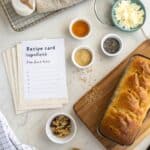
Homemade Marble Rye Bread Recipe That’s Worth Every Slic
- Total Time: 2 hours
- Yield: 1 loaf 1x
- Diet: Vegetarian
Description
This marble rye bread recipe features two rye doughs — one light, one dark — swirled together for a stunning loaf with rich flavor and old-world charm.
Ingredients
1 cup warm water (105–110°F)
2¼ tsp active dry yeast
1 tbsp sugar or honey
1½ cups rye flour
2½ cups all-purpose flour (divided)
1½ tsp salt
1 tbsp caraway seeds (optional)
1 tbsp molasses (for dark dough)
1 tbsp cocoa powder (for dark dough)
Instructions
1. Activate yeast in warm water with sugar/honey; let sit until foamy.
2. In a bowl, combine rye flour, 1½ cups all-purpose flour, salt, and caraway.
3. Add yeast mixture and mix until dough forms.
4. Split dough in half. Add cocoa and molasses to one half and knead.
5. Add remaining flour gradually to both doughs until smooth.
6. Let each dough rise separately for 1 hour.
7. Roll out each dough and layer or braid together.
8. Place in greased loaf pan or shape freeform.
9. Proof for 45 minutes, covered.
10. Bake at 375°F for 30–35 minutes until crust is golden and sounds hollow.
11. Cool completely on wire rack before slicing.
Notes
Substitute molasses with brown sugar if needed.
Add a touch of espresso powder to dark dough for depth.
Avoid slicing while hot to keep texture intact.
- Prep Time: 1 hour 20 mins
- Cook Time: 35 mins
- Category: Bread
- Method: Baking
- Cuisine: European
Nutrition
- Serving Size: 1 slice
- Calories: 150
- Sugar: 1g
- Sodium: 190mg
- Fat: 1g
- Saturated Fat: 0g
- Unsaturated Fat: 1g
- Trans Fat: 0g
- Carbohydrates: 30g
- Fiber: 3g
- Protein: 5g
- Cholesterol: 0mg
